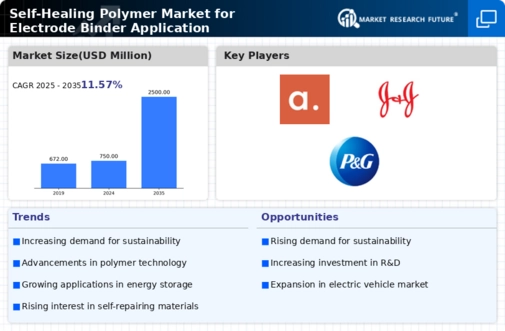Self Healing Polymer Market for Electrode Binder Application Summary
As per MRFR analysis, the Self-Healing Polymer Market for Electrode Binder Application was estimated at 13060.9 USD Million in 2024. The self-healing polymer industry is projected to grow from 19916.57 USD Million in 2025 to 1354029.46 USD Million by 2035, exhibiting a compound annual growth rate (CAGR) of 52.49 during the forecast period 2025 - 2035.
Key Market Trends & Highlights
The Self-Healing Polymer Market for Electrode Binder Application is poised for substantial growth driven by sustainability and technological advancements.
- The market is witnessing a pronounced shift towards sustainability, with manufacturers increasingly prioritizing eco-friendly materials.
- Technological advancements are enhancing the performance and durability of self-healing polymers, making them more appealing for electrode binder applications.
- North America remains the largest market, while Asia-Pacific is emerging as the fastest-growing region, reflecting diverse regional demands.
- Rising demand for advanced energy storage solutions and increased investment in research and development are key drivers propelling market growth.
Market Size & Forecast
| 2024 Market Size | 13060.9 (USD Million) |
| 2035 Market Size | 1354029.46 (USD Million) |
| CAGR (2025 - 2035) | 52.49% |
Major Players
BASF SE (DE), 3M Company (US), DuPont de Nemours, Inc. (US), Evonik Industries AG (DE), Mitsubishi Chemical Corporation (JP), LG Chem Ltd. (KR), Solvay S.A. (BE), Huntsman Corporation (US), SABIC (SA)


















Leave a Comment